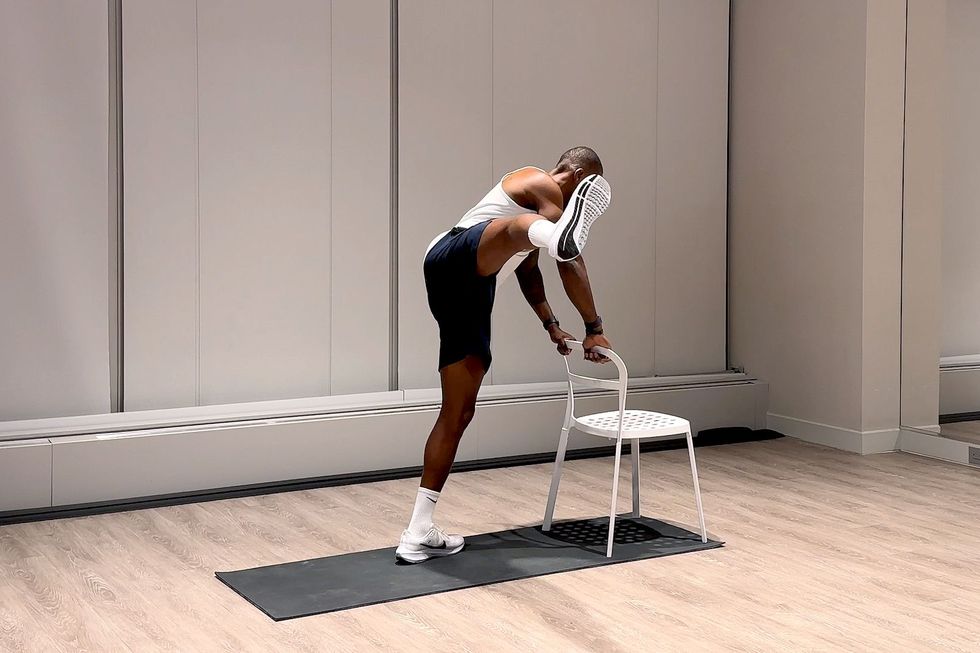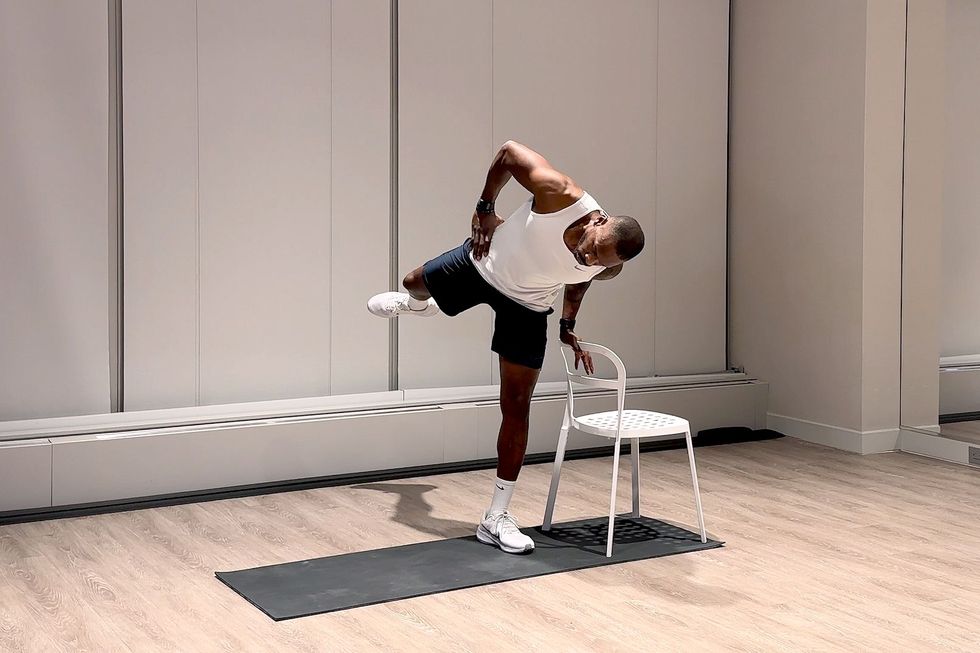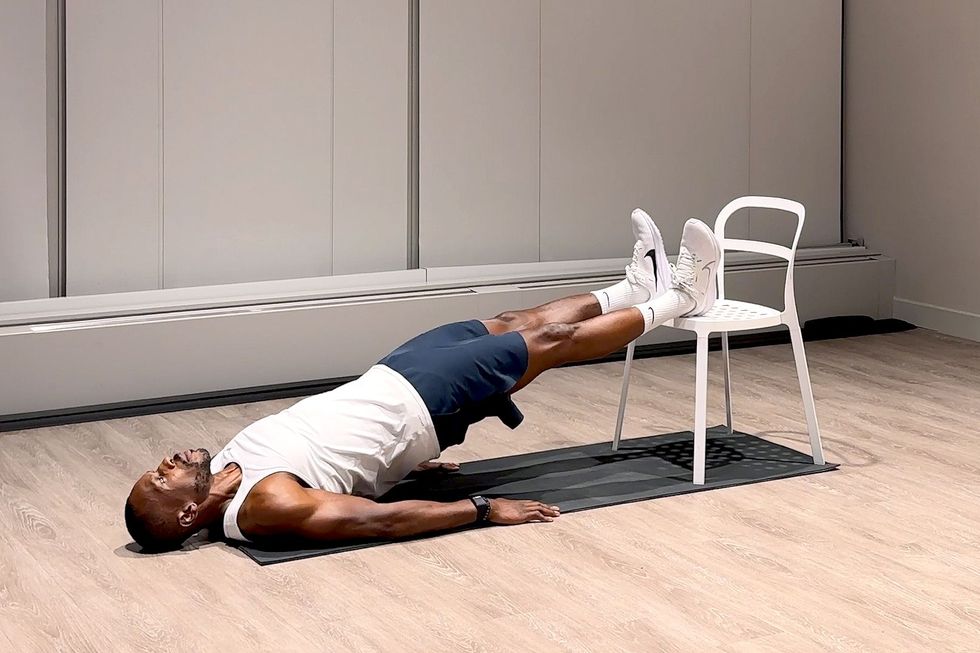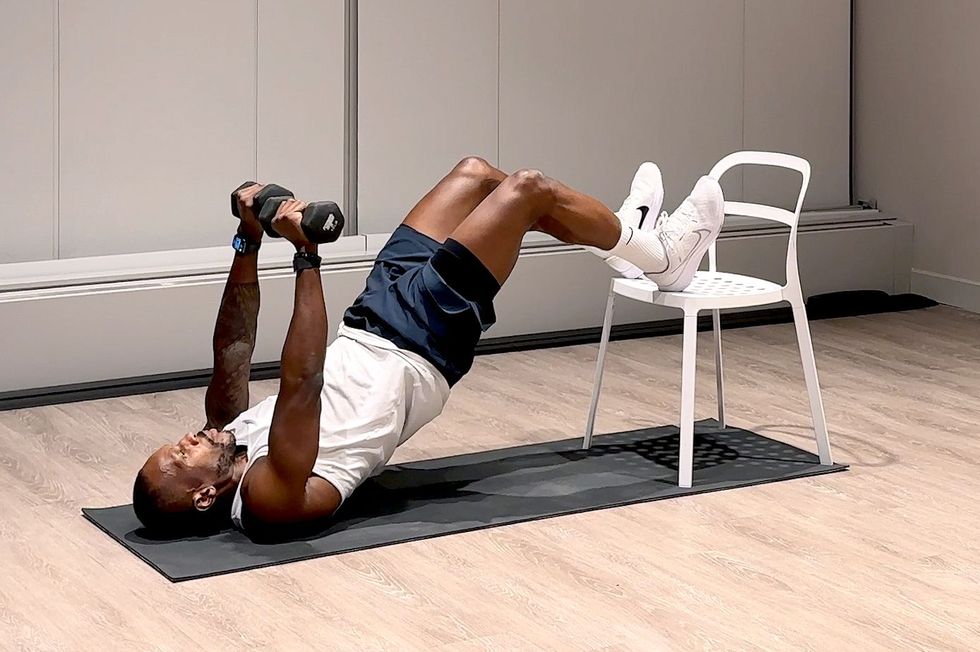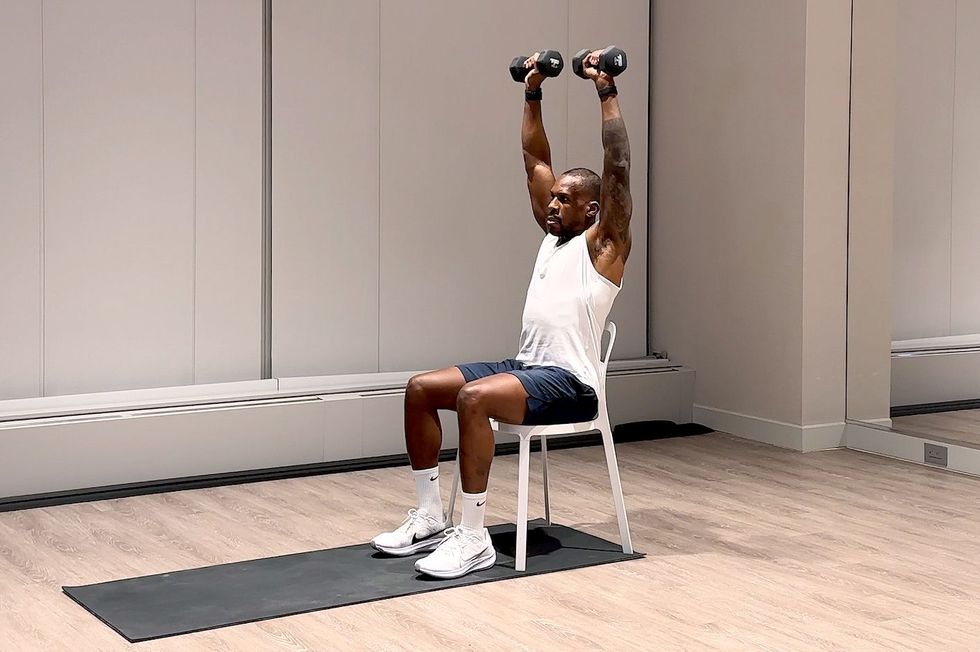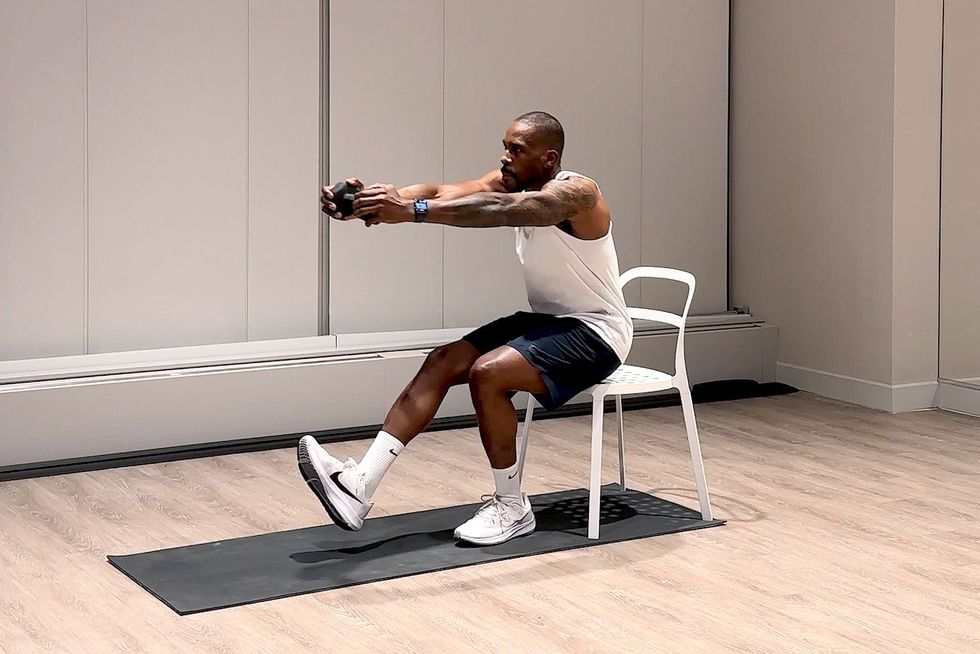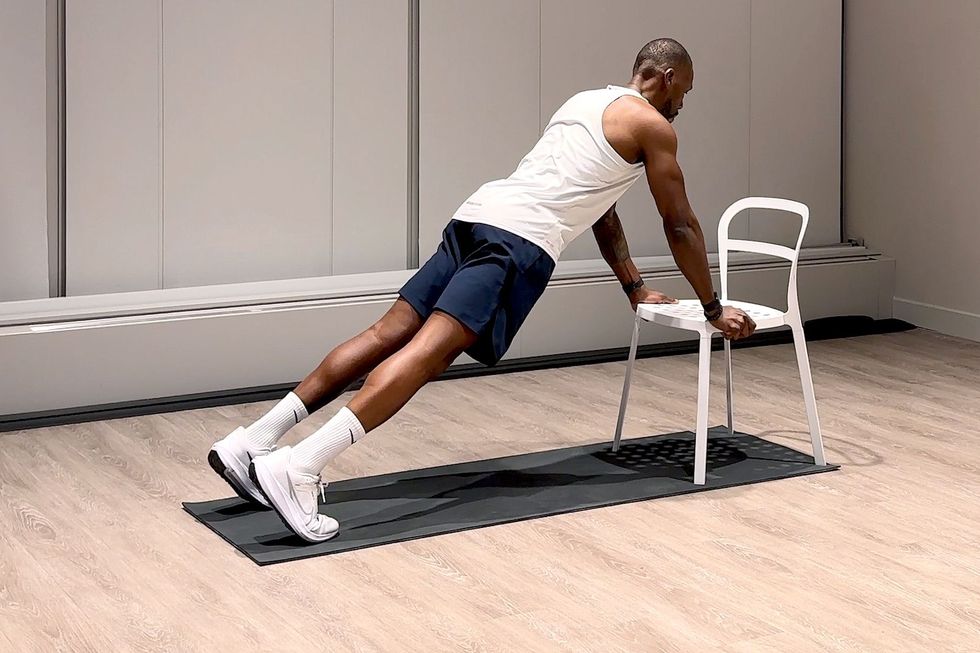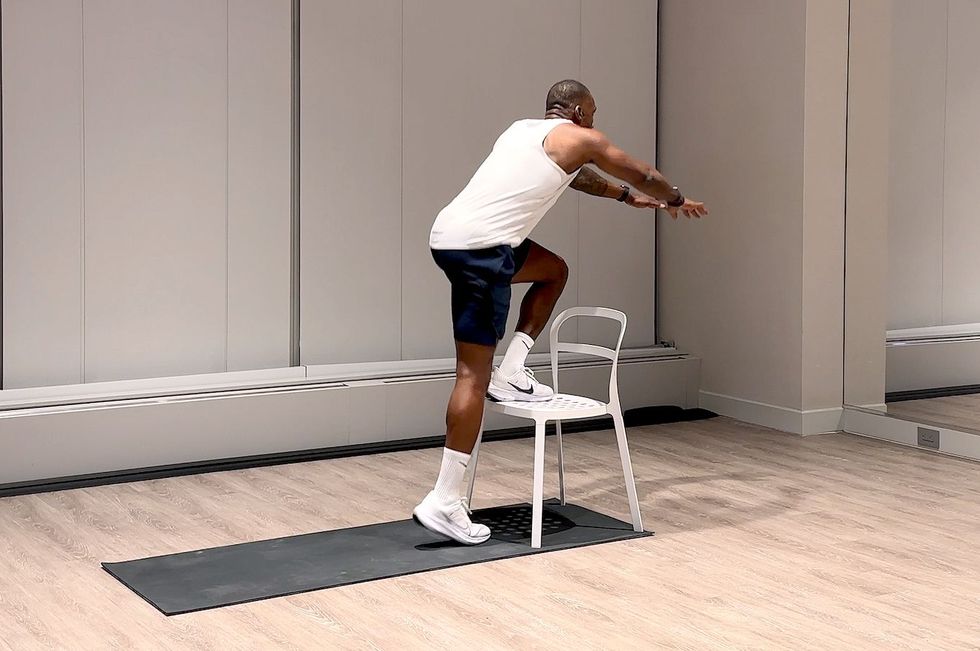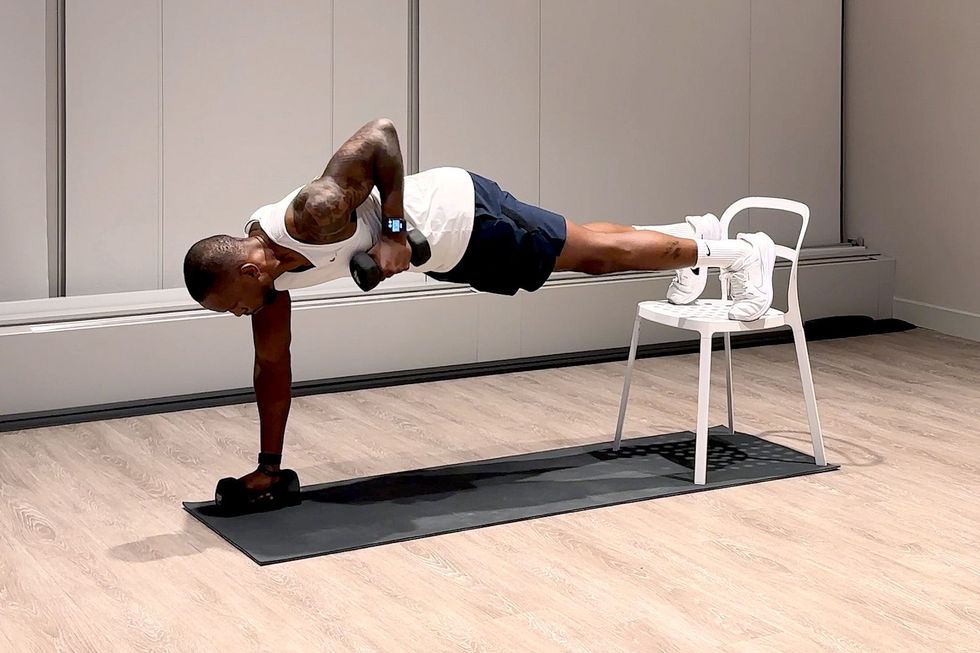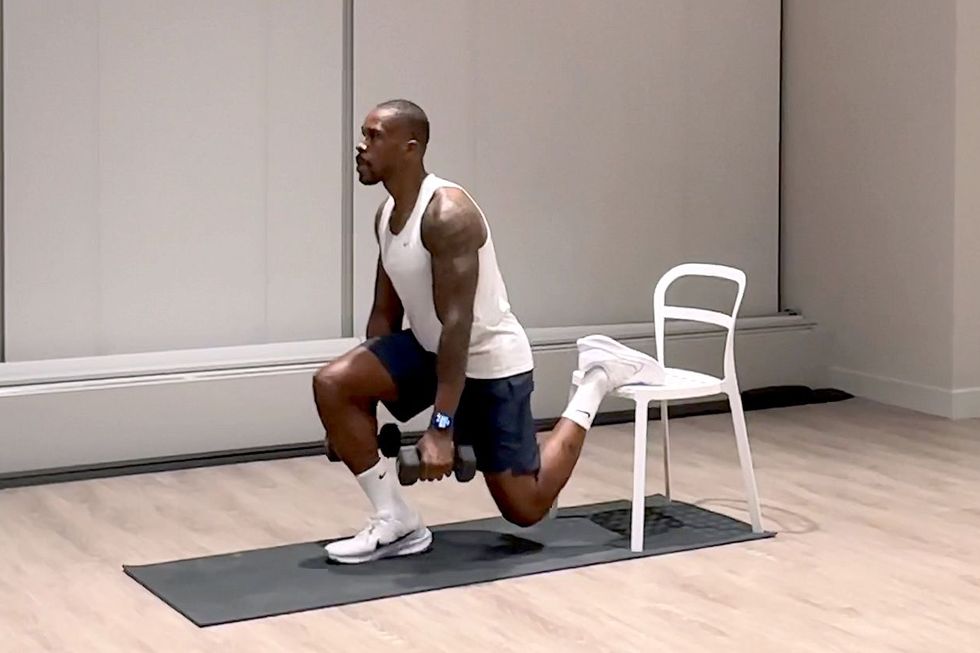A Full-Body 20-Minute Workout You Can Do at Home
Build strength and stability with this quick workout.
Building strength and stability in the comfort of your own home definitely has its perks. You don’t have to worry about waiting your turn for the exercise machines or free weights as you would at the gym, you save time because you don’t have to sit in traffic on your way to the weight room, and let’s be honest, it’s just easier to shower at home.
But even without those additional elements added to your workout, you might still find yourself pressed for time. So, to help you sidestep all these potential setbacks, we have the perfect 20-minute workout at home that makes getting in a sweat super convenient.
The Benefits of a 20-Minute Workout at Home for Runners
This 20-minute at-home workout consists of great compound movements, which will help runners recruit big movers (glutes, hamstrings, quads, and calves) in similar fashion to running, says Yusuf Jeffers, NASM-certified personal trainer and USATF-certified running coach in New York City. That means it helps you build a strong and robust body to withstand all the miles.
“Runners can look to add these exercises into any portion of their training cycle, where it’s important to maintain strength without compromising ability to perform, due to too-high training stimulus,” he adds.
Plus, this strength-training workout is easy to progress so you stay interested and build the strength you need, Jeffers says.
How to use this list: Do the exercises in the order listed below. To warm up, complete 3 sets of exercises 1 to 4 for 30 seconds each and switch sides halfway through. For exercises 5 to 11, complete 2-3 sets of 8-12 reps.
Warm-up, 3 rounds
1. Leg Swing
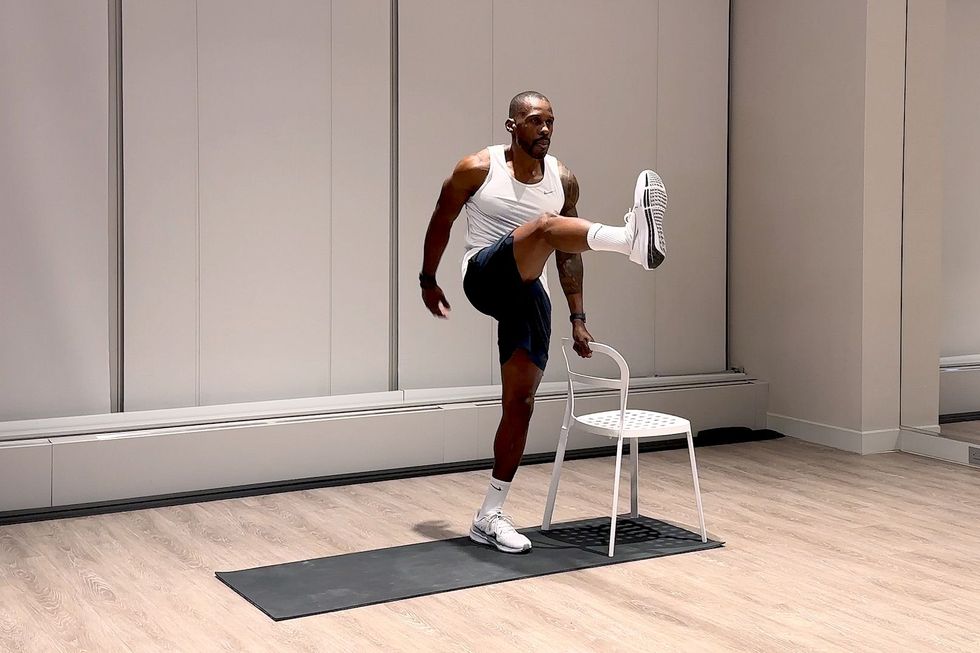
Why it works: This exercise will stretch and wake your calves, quads, and hamstrings for the exercises to come.
How to do it: Stand with a chair to right side. Hold the chair with right hand for balance, swing left leg back and forth for 15 seconds. Then switch sides.
2. Lateral Leg Swing
Why it works: This exercise is great for runners, because it focuses on improving your range of motion horizontally while also waking up the muscles. It helps runners who are used to moving in a sagittal plane (back and forth) get out of their comfort zones, says Jeffers.
How to do it: Stand with the chair in front of you. Hold the chair with both hands for balance, swing left leg to the right and then to the left for 15 seconds. Then switch legs.
3. Single-Leg Hip Rotation
Why it works: Adding a chair will assist with performing this difficult exercise, says Jeffers. This way you can focus on opening up your hips and maintaining your balance at the same time.
How to do it: Stand with a chair to right side. Hold chair with right hand for balance, then send left leg straight back. Keep back flat and form a straight line from shoulder to ankle. Rotate hip to the left, and then to the right. Repeat for 15 seconds. Then switch legs.
4. Straight-Leg Glute Bridge
Why it works: Using a chair increases the range of motion of the bridge and wakes up the glute muscles. It also prepares you for more challenging moves to come.
How to do it: Lie face-up, arms down by sides, both legs straight, and heels resting on the edge of a chair. Engage glutes to lift hips up off the floor, hold for 2 seconds, then lower hips back down. Repeat for 30 seconds.
Strength Set, 2-3 rounds
5. Crunch to Glute Bridge
Why it works: Crunches and glute bridges both help runners build abdominal strength, but this combination also helps runners strengthen their glutes and hamstrings.
How to do it: Lie face-up, arms extended over shoulders with a dumbbell in each hand, knees bent at a 90-degree angle, and heels resting on a chair. Engage core, keep chin up, and lift shoulders and upper back off the mat. Pause, then lower torso back down. Keep arms extended and engage glutes to lift hips off the ground. Pause for a second and then lower hips down. Repeat.
6. Seated Curl to Arnold Press
Why it works: Build the muscles in your arms, shoulders, and chest. Sprinkling a few arm-centric moves into your routine, like this one, will help you maintain the arm strength you need for a strong swing.
How to do it: Sit in a chair with a dumbbell in each hand, arms by sides. Engage biceps to bring the dumbbells up toward shoulders, palms facing chest. Press dumbbells straight up with biceps by ears, rotating arms so palms face out. Then, bring weights back down to shoulder height, and rotate arms so palms face shoulders. Extend arms back down by sides. Repeat.
7. Single-Leg Squat With Front Press
Why it works: This single-leg exercise requires an element of stabilisation and core control, which is always important for runners, says Jeffers. Also, the front press will further challenge your stability while building arm strength.
How to do it: Stand in front of a chair, facing away from it, and lift left leg out in front of you. With chest lifted, shoulders back and down, holding a dumbbell horizontally, close to chest with both hands. Slowly send hips back and down while bending right leg to lower down and sit on the chair for a single-leg squat. At the same time, extend arms out as you sit, while keeping left foot lifted and upper body tall. Press through right foot to stand back up. Repeat for reps. Then switch sides.
8. Incline Push-ups
Why it works: Just like the traditional push-up, incline push-ups will help strengthen your entire upper body, leading to better posture and a stronger arm drive.
How to do it: Start in a high plank position with hands on the edge of a chair, shoulders over wrists, and core, glutes, and legs engaged. Bend elbows to lower body toward chair in one straight line. Keeping core engaged and hips in line with the rest of the body. Push back up to plank. Repeat.
9. Eccentric Step-Down
Why it works: This is a simple way to build single-leg strength and improve stability — crucial elements for runners, Jeffers says.
How to do it: Stand up on chair on left foot, right leg hanging slightly off the back. Slowly step down, on a count of 3 to 5, extending arms out in front of you and bending left knee. Tap the ground with right foot. Push through left foot to stand back up. Repeat for reps. Then switch sides.
10. Feet-Elevated Renegade Row
How to do it: Start in a high plank position with hands on dumbbells, wrists under shoulders, and toes on top of a chair. Keeping hips steady, pull one dumbbell up toward hip, elbow staying close to side. Lower dumbbell to floor and repeat on the other side. Continue alternating.
11. Single-Leg Deadlift to Bulgarian Split Squat
Why it works: Put your strength and balance to the test with this double-duty exercise. Jeffers says this move will help runners build a stronger lower half, because it specifically targets the glutes, quads, hamstrings, and calves — all pertinent to running.
How to do it: Stand in front of a chair with a dumbbell in each hand and palms facing knees, shift weight to left leg and rest right foot on the chair behind you, forming a 90-degree angle at the knee. Keep back flat and shoulders down. Hinge at the hips by sending butt straight back. Engage core as torso reaches toward the floor, then squeeze glutes and drive left foot into the ground to stand back up. Rotate palms toward each other, and bend left knee to lower into the lunge position. Keep back straight, chest tall, and lean just slightly forward from the hips. Drive through left foot to stand back up. Repeat for reps. Then switch legs.
READ MORE ON: strength strength exercises strength workout strength-training



